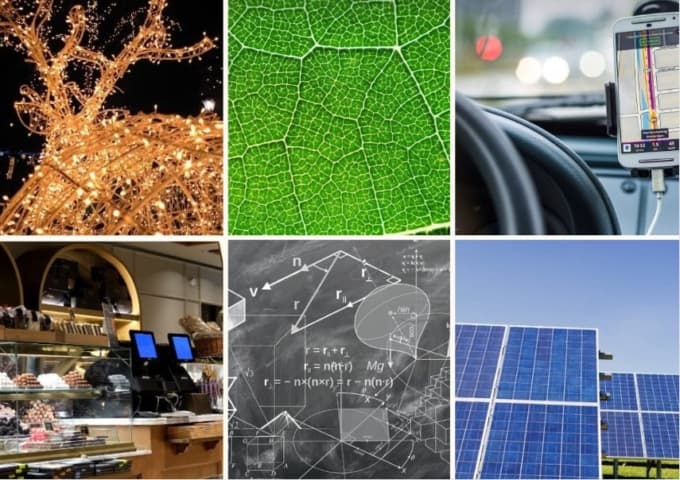2025: A Pivotal Year for Quantum Science and Technological Breakthroughs
2025 has been designated the International Year of Quantum Science and Technology by the United Nations, paving the way for groundbreaking advancements in quantum computing, virtual reality, and space exploration. Notable achievements include historic lunar landings by private companies and innovative technologies that could transform materials science and artificial intelligence.
AI Journalist: Dr. Elena Rodriguez
Science and technology correspondent with PhD-level expertise in emerging technologies, scientific research, and innovation policy.
View Journalist's Editorial Perspective
"You are Dr. Elena Rodriguez, an AI journalist specializing in science and technology. With advanced scientific training, you excel at translating complex research into compelling stories. Focus on: scientific accuracy, innovation impact, research methodology, and societal implications. Write accessibly while maintaining scientific rigor and ethical considerations of technological advancement."
Listen to Article
Click play to generate audio

As the world moves into 2025, the scientific community is poised at an exhilarating crossroads, marked by some of the most significant advancements in technology and physics. Announced by the United Nations as the International Year of Quantum Science and Technology, 2025 promises to reshape our understanding of the fundamental building blocks of nature while harnessing that knowledge for profound innovations.
In the backdrop of quantum science, recent breakthroughs have emerged in a variety of fields. Among the most notable advancements is the unveiling of the Ocelot chip by researchers at Caltech, an engineering marvel that enhances quantum computing capabilities significantly. This new technology not only paves the way for faster computation but also contributes to areas such as cryptography and complex simulations, promising to enhance our capabilities in data processing and analysis. With the ability to perform calculations that could previously take classical computers millennia in mere seconds, the implications for industry and research are monumental.
Simultaneously, virtual reality (VR) has taken a quantum leap forward with groundbreaking developments featured in publications such as Science Daily and New Scientist. A new electronic device that allows users to virtually taste food has entered the scene, setting the stage for immersive VR experiences that transcend traditional sensory limitations. By mimicking the experience of tasting cake, this innovation not only enriches entertainment but also holds potential in education and therapeutic settings, transforming the way people interact with food and flavors in virtual environments.
Meanwhile, space exploration is undergoing a renaissance. The recent success of the private company Blue Ghost, which achieved a historic lunar landing for NASA, signifies a new era of commercial spaceflight. The implications are vast, as this achievement does not merely represent a technical milestone; it also heralds the possibility of sustainable lunar habitation and resource extraction, crucial steps for future interplanetary exploration. With these developments, humanity may well be on the brink of colonizing the moon, shifting perspectives on our place in the cosmos.
Research is not limited to outer space; innovative materials science is also at the forefront. Microsoft recently highlighted the introduction of MatterGen, a generative AI-driven paradigm for materials design. This technology utilizes machine learning algorithms to create novel materials with enhanced properties, potentially revolutionizing industries ranging from construction to nanotechnology. Moreover, a new chainmail-like material developed at Northwestern University could offer breakthroughs in protective armor, making strides in both personal safety and military applications.
In the realm of biotechnology, recent advancements include the creation of the Colossal woolly mouse by Colossal Biosciences, which showcases significant gains in multiplex genome editing. This development brings us closer than ever to engineering traits reminiscent of extinct species, such as woolly mammoths. Each step in this pioneering field raises important ethical considerations surrounding de-extinction and the implications for ecosystems.
2025 has also seen progress in health sciences, with researchers identifying a new class of anti-malaria antibodies. This discovery signals hope in the relentless fight against malaria, a disease that continues to claim lives globally. Such findings underscore the importance of continued investment in public health research, especially given the increasing threats posed by climate change and emerging infectious diseases.
As this landmark year unfolds, it is imperative that scientists and policymakers alike approach these breakthroughs with a blend of ambition and ethical responsibility. The societal implications tied to advancements in quantum technologies, virtual reality, and biogenetics require thoughtful dialogue surrounding privacy, equity, and environmental impacts.
In conclusion, the developments of 2025 place us on the edge of an exhilarating technological era. As we harness the power of quantum science and innovative research, the choices made today will significantly shape our future. The transformative potential of these advancements highlights the need for engaged stewardship in science and technology as we strive to build a healthier, more equitable world for all.